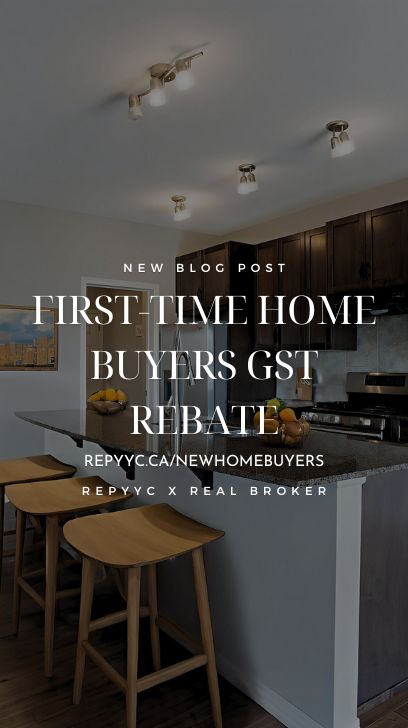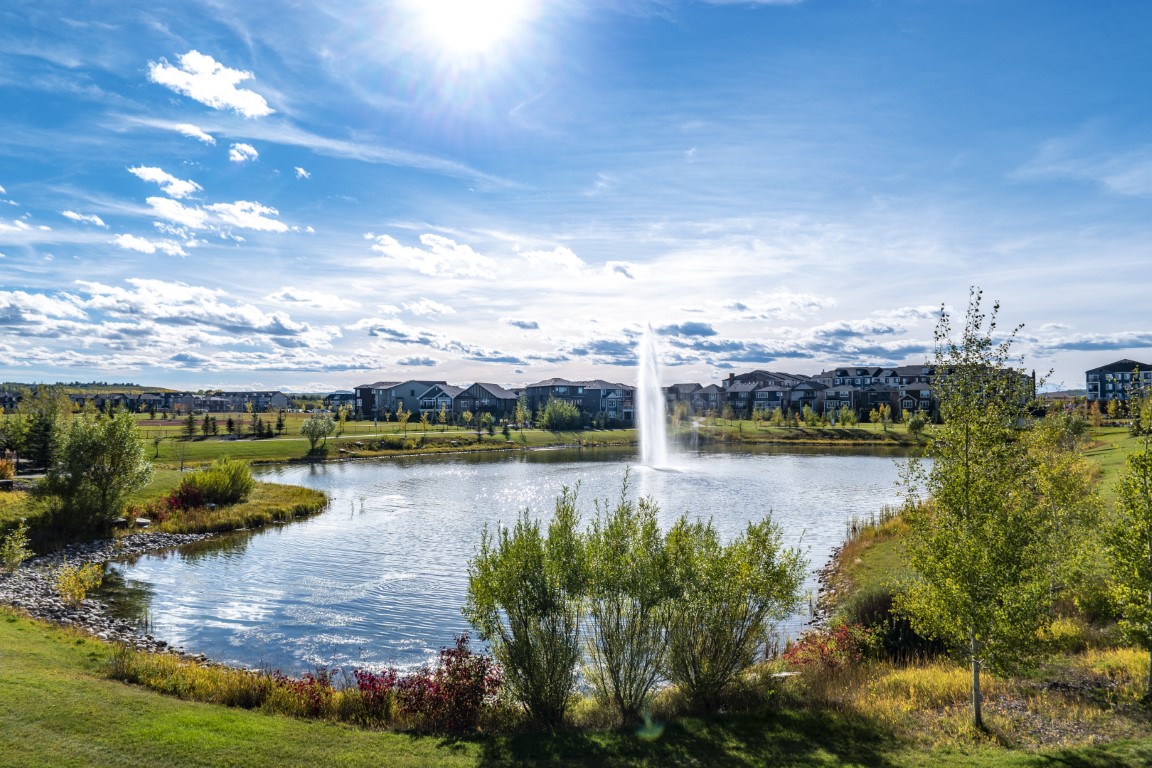Unlock Your Dream Home: Up to $62,700 in Savings for Canadian First-Time Buyers with the New GST Rebate and Other Key Programs
If you're a first-time buyer looking to break into the real estate market—especially with new construction—then stick with me, because this blog is packed with essential info that could save you serious money. We’re talking about up to $62,700 in savings when you strategically stack federal and provincial programs available right now.
The landscape is changing. Home prices have cooled slightly in major markets like Ontario and BC, inventory is climbing, and the wild bidding wars we saw in the last few years have calmed down. That creates opportunity, especially if you take advantage of what’s on the table.
Use our quick navigation guide below to jump to any point of our blog on First-Time Home Buyers GST Rebate:
- Canada’s New Federal First-Time Home Buyer (FTHB) GST Rebate

- Important: This Rebate Isn’t Law Yet
- Other Financial Programs for First-Time Buyers
- Home Buyers’ Plan (HBP) – RRSP
- First Home Savings Account (FHSA)
- Tax-Free Savings Account (TFSA)
- Home Buyers’ Amount Tax Credit
- Property Transfer Tax (PTT) Exemptions
- How to Combine Programs for Maximum Savings
- Additional Tips for Non-Traditional Homes
- CRA Forms and Filing Deadlines
- Final Advice
- Where to Find New Construction Homes in Calgary
Canada’s New Federal First-Time Home Buyer (FTHB) GST Rebate
One of the most significant opportunities for savings is the new Federal First-Time Home Buyer GST Rebate. This initiative eliminates the 5% federal Goods and Services Tax (GST) on new homes priced up to $1 million, with a reduced rebate available on homes up to $1.5 million. Anything over that threshold doesn’t qualify.
This could mean up to $50,000 in savings, with an average projected rebate of $26,832. The rebate only applies to purchase agreements signed on or after May 27, 2025, and before 2031. Your home must begin construction before 2031 and be completed (with title transferred) before 2036.
To qualify, you must be at least 18 years old, a Canadian citizen or permanent resident, and you must not have owned or lived in a home as your primary residence during the year of purchase or in the previous four years. This applies to your spouse or common-law partner too. The home must be intended as your primary residence, and you must be the first occupant.
Eligible properties include brand-new homes from builders, owner-built homes, mobile and modular homes, floating homes, and even shares in co-op housing corporations. Substantially renovated homes—where 90% or more of the interior has been redone—also qualify.
Important: This Rebate Isn’t Law Yet
Here’s where things get tricky: this rebate is still a legislative proposal. It hasn’t passed through Parliament or received Royal Assent, though that’s expected in early fall 2025.
If your possession date happens before the law is passed, you’ll need to pay the full GST upfront, then apply to the CRA for a refund. If your possession occurs after the law is passed, the builder might deduct the rebate off the purchase price. However, current drafts suggest you’ll still need to apply directly to CRA.
Dusko’s Tip: Qualify for your mortgage as if you’re paying full GST. If the rebate applies before closing—awesome. If not, you’re still covered.
From a builder's perspective, there’s also risk. They may not want to credit the rebate unless the law is finalized, since they could be jointly liable if you don’t qualify. Builders also face administrative challenges—verifying whether someone owned a home, especially outside of Canada, isn’t easy.
Also, keep in mind: if the rebate increases demand, home prices may rise, especially with rising material costs and trade shortages. So don’t expect builders to simply knock 5% off new home prices.
CRA is expected to release new application forms before the end of the year, and once the GST is paid, you’ll have two years to file your rebate. If you are just starting out and getting your ducks in a row, your mortgage pre-approval is your best first step. Learn more in the videos below or start your application [here].
Mortgage Pre-Approval
Other Financial Programs for First-Time Buyers
Beyond the GST rebate, there are multiple programs that can help first-time buyers save even more:
Home Buyers’ Plan (HBP) – RRSP
The Home Buyers’ Plan lets you withdraw up to $60,000 tax-free from your RRSP to use for your down payment. You have 15 years to repay it, and for withdrawals between January 1, 2022 and December 31, 2025, repayments are deferred for 5 years.
Important: RRSP contributions must be in your account for at least 89 days before withdrawal to qualify for the tax deduction.
First Home Savings Account (FHSA)
The FHSA gives you the best of both worlds: tax-deductible contributions like an RRSP, and tax-free withdrawals like a TFSA. You can contribute up to $8,000 annually, to a maximum of $40,000. There’s no repayment required, and no holding period—you can access your funds as soon as you need them.
Just remember: contribution room only starts when you open the account, not automatically from 2023.
First Home Savings Account
Tax-Free Savings Account (TFSA)
If you’ve maxed out your RRSP and FHSA, the TFSA is your next best bet. Contributions aren’t tax-deductible, but your money grows and comes out tax-free. Just be cautious—withdrawals only restore contribution room on January 1 of the next year, and over-contributions are penalized at 1% per month.
Home Buyers’ Amount Tax Credit
You can claim a $10,000 non-refundable tax credit when you purchase your first home, giving you $1,500 back on your federal taxes. If buying with a partner, you can split the credit or have one person claim the full amount.
Property Transfer Tax (PTT) Exemptions
These vary by province but can offer huge savings. For instance, in BC, homes priced $500,000 or less are fully exempt, potentially saving $8,000. Partial exemptions exist up to $835,000, and new homes up to $1.1 million may also qualify.
How to Combine Programs for Maximum Savings
If you want to save the most, here’s how I’d advise you to structure it:
Start with the FHSA—you get the tax deduction and no repayment required. Then go to your RRSP and use the HBP, making sure your contributions have been there for at least 89 days. Use your TFSA for anything leftover. After you buy, claim the $1,500 tax credit, and don’t forget to apply for PTT exemptions in your province.
Under the right circumstances, these stacked programs can save you up to $62,700 on a $500,000 new home.
Additional Tips for Non-Traditional Homes
Modular, mobile, floating, and co-op homes are all eligible for the GST rebate—just make sure they meet the qualifying criteria. If you’re buying land separately or leasing it, the process may involve multiple methods of rebate calculation. Keep all receipts and documentation.
If you're buying a substantially renovated home, more than 90% of the interior must be removed or replaced. Finished basements and attics count—garages and crawlspaces do not. Save every original invoice in your name for at least six years.
CRA Forms and Filing Deadlines
You’ll need the right forms depending on your situation:
-
GST190 for homes from builders
-
GST191 and GST191-WS for owner-built homes
-
RC7190-ON/RC7191-ON for Ontario-specific claims
You generally have 2 years from possession or substantial completion to file. Claims can take up to 6 months to process, and audits are common. Make sure your forms are complete and calculations are accurate to avoid delays.
Final Advice from Dusko
Before making any big decisions, speak to your accountant, mortgage advisor, and lawyer. There are a lot of moving parts and rules to follow, especially with the GST rebate not yet being law.
Structure your finances assuming you’ll need to pay GST at closing. Stay updated with CRA and Finance Canada announcements. And don’t forget to look into provincial programs—many buyers miss out simply because they didn’t check the local rebates.
Where to Find New Construction Homes in Calgary
If you’re a first-time buyer looking for a brand-new home that could qualify for the GST rebate, here are some of Calgary’s most active and promising new communities:
-
Hotchkiss (SE Calgary): Master-planned with future LRT access, walking trails, and modern homes near Seton.
.png)
-
Alpine Park (SW Calgary): Urban village design with parks, plazas, and homes from the mid-$450Ks.
-
Glacier Ridge (NW Calgary): Nature-forward with 10 km of trails and a blend of ranch-style and modern architecture.
-
Rangeview (SE Calgary): Calgary’s first “agrihood” with gardens, orchards, and a community focused on food sustainability.
-
Taza Park (SW Calgary): Indigenous-led development on Tsuut’ina Nation land with cultural integration and walkable amenities.
-
Goldwyn (Balzac, North of Calgary): Estate-style living just outside the city, ideal for those who want more space without losing convenience.
Read more about what these new communities have to offer: Calgary's Hottest New Communities
Ready to Make Your Move?
This could be the perfect time to take that first step. With all these tools in your corner, homeownership isn’t just a dream—it’s a smart financial move.
Thinking of buying your first home? Let’s chat about your options.
Call me at 403-988-0033 or shoot me an email at dusko@repyyc.com Follow me on Instagram @DuskoSremac_REPYYC for daily insights and listings.

Helping First-Time Buyers Stack Every Advantage
Dusko Sremac – Calgary & Area REALTOR® | Team Lead, REPYYC
First-time buyers face enough challenges—navigating rebates, programs, and fine print shouldn’t be one of them. I’ve spent years helping clients unlock every dollar they’re entitled to, whether it’s GST savings, RRSP withdrawals, or stacked provincial exemptions.
My approach is simple: strategy first. Because the difference between missing a deadline and structuring your purchase right can mean tens of thousands of dollars. This market rewards preparation—and that’s where I step in.


Leave A Comment